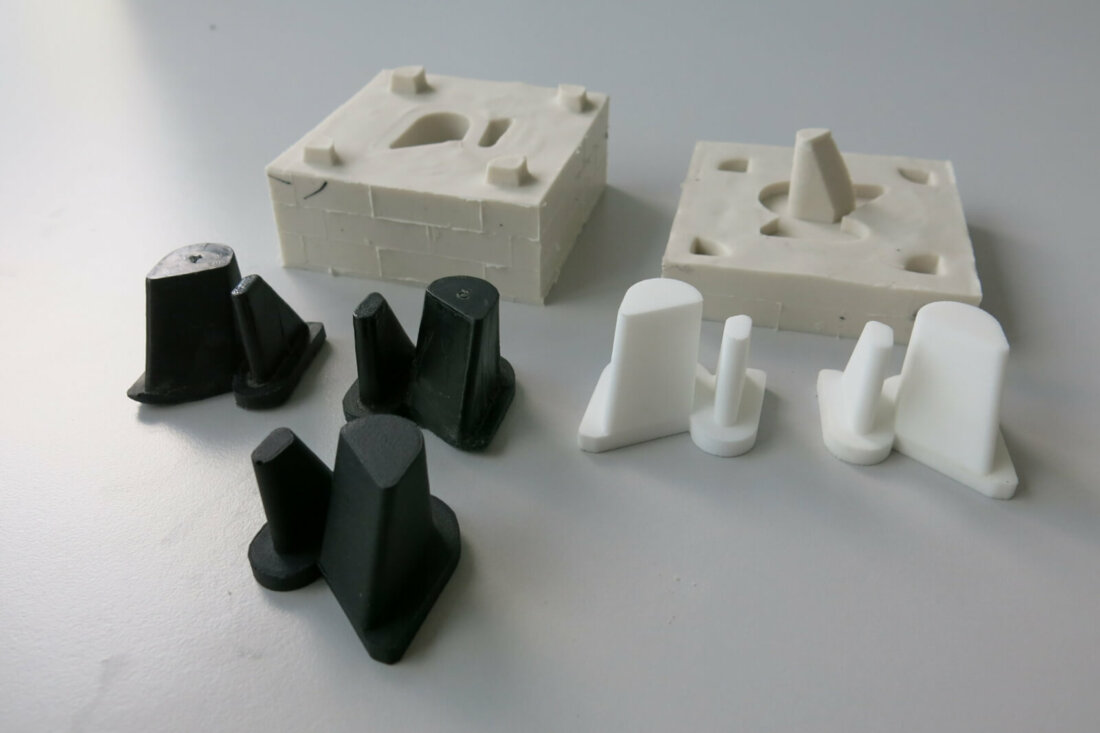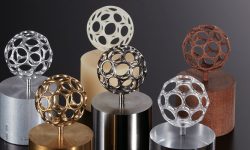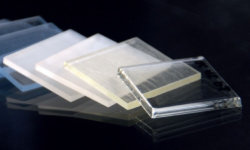Regularly used for professional or industrial plastic prototypes, the process of urethane casting is also a godsend for hobbyists who want to make small plastic miniatures, models, toys, and figurines. With a good level of detail and very low up-front costs compared to injection molding, urethane casting could be your next solution for tabletop gaming or other hobbyist pursuits.
This article looks at how you can use urethane or vacuum casting to make miniature resin models, either at home or using a skilled prototyping service like 3ERP. In the article we will why urethane casting works so well for miniatures and the different ways it can be used.
What is urethane casting?
Urethane casting is a form of resin casting that uses polyurethane resin as a casting material. Molds are made from a low-cost flexible material, typically silicone, by placing a master pattern in a container and surrounding the pattern with the liquid mold material, which then cures and solidifies.
To make the castings, the one-part or two-part silicone molds are filled with urethane resin in a two-part solution which quickly cures and hardens when the two parts are mixed. The simplest filling method is gravity casting, in which no further forces are used. However, a more effective method is to use a vacuum chamber or pressure pot, as these devices remove air bubbles from the liquid resin, helping to produce more accurate castings.
Silicone molds have some advantages over rigid molds. Part ejection is easy, as the hard castings can easily pop out of the silicone mold, and the molds are also very cheap to produce. However, unlike metal tooling, silicone molds typically only last for around 20 castings.
Why do hobbyists use urethane casting for models, miniatures, toys & figurines?
From model train collectors to tabletop gamers, many hobbyists like to create their own miniatures — either to showcase their own creative skills or to simply fill in a missing piece in their collection.
They can do this in many ways, such as hand-sculpting unique pieces or using a high-resolution 3D printer to fabricate a custom part. However, there are not many ways to successfully make lots of identical duplicate parts on a small budget.
This is where urethane casting comes in. A hobbyist can use their preferred method to make a master pattern — a hand-sculpted clay figurine, for example — then use urethane casting to make several plastic duplicates of the original. They can even use a pre-fabricated item as the master pattern, rather than making one from scratch.
Urethane casting is highly suited to miniatures because it can produce an excellent level of detail. Cast urethanes are not particularly strong, but this does not matter, as the miniatures are not put through much physical stress during use. Polyurethanes also accept pigments well, allowing for a range of colors, though hobbyists may prefer to hand-paint their castings after the casting process.
Here are just some exciting applications of urethane casting in the hobbyist space:
- Making figurines and set pieces for tabletop games like Warhammer and DnD
- Making high-volume miniature train set parts such as carriages and tracks
- Making scale models of aircraft and other vehicles
- Making garage kits of anime figures, mecha, etc.
- Making multi-component articulated toys with posable limbs
DIY vs outsourced urethane casting of miniatures
To make urethane cast miniatures, hobbyists can choose to carry out the casting process at home or use a professional service provider like 3ERP. The choice depends on the hobbyist’s accuracy requirements, skill level, and budget.
On the whole, professional service providers can achieve better results than hobbyists, as they are highly skilled in mold making and casting and have access to professional equipment like vacuum chambers, allowing them to make detailed, bubble-free castings. For particularly intricate parts and high-volume orders, using a professional service may be preferable.
That being said, hobbyists can achieve good results at home with the right preparation. Advantages of DIY polyurethane casting include lower costs and the ability to use homemade master patterns (as service providers typically need the master pattern to be in digital format for CNC machining or 3D printing on-site).
To get started with DIY urethane casting, first read our polyurethane casting design tips to learn what makes an effective master pattern, then proceed to our guide on how to make a silicone mold.
Selling custom cast miniatures
Many hobbyists choose to cast their models, miniatures, toys, and figurines for their own enjoyment. However, others may sell their custom castings to likeminded hobbyists.
Selling cast miniatures is legal as long as the master pattern is in fact a custom design and not a prefabricated item from a model manufacturer, which would be subject to copyright laws. Adapted or “kitbashed” designs do not count as original work and may breach copyright laws.
Depending on the hobby, there may be a strong market for custom cast miniatures on platforms like eBay or Etsy, with the models being either unfinished or hand-painted by the seller. Some tabletop gamers prefer to buy miniatures that have been custom painted by a skilled painter.
Urethane casting with 3ERP
3ERP works with a wide range of customers, from large multinational companies to individuals such as miniature hobbyists. Our skilled engineers are capable of turning your master pattern designs into highly detailed resin castings. To find out how much it would cost, contact us for a free quote, and rest assured that your intellectual property is safe with us.








